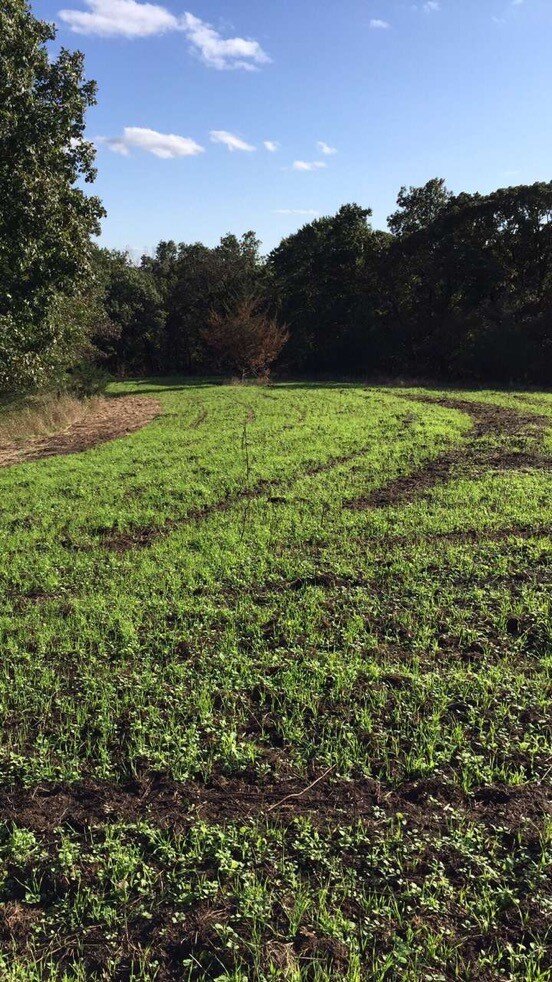Cereal grains for late season success
The stretch from late July through the month of August has been tough for a lot of us that put food plots in every year. I have been witnessing some of my plots finally receiving their first drops of rain since being planted in late July. Patchy growth or burnt up seedlings is common when we experience the lack of moisture like we have the last 6 weeks. Following along social media, I have seen a few with the ability to get water to their plots in an attempt to save them. But like the most of us, were looking for Plan B (or maybe C or D.) For me, I am following the plan I have gone with every year for the past 4 years now and investing in my late season insurance policy.
In agricultural applications – cereal grains are commonly used as a cover crop or a nurse crop for the soil and other seedings when the years crops are harvested off the fields. In hunting scenarios cereal grains can provide the same benefits to your food plots while feeding wildlife at the same time! It seems like every year when I walk onto a new farm I see where last years food plots were, covered in weeds that will need mowed, tilled and sometimes a chemical application. In most of these scenarios this could have been prevented if cereal grains had been planted.
Cereal grains provide great winter food sources and a great spring cover crop for the following years plots that will out contest most weeds. In most scenarios if I know that I will be planting a brassica plot year after year I will interseed cereal grains into the brassica plot at a reduced rate per acre in early-mid September. Depending upon goals and the habitat plan set in place, there is a few different options and seed mixtures that can be implemented.
Seed oats are one of the most highly palatable and attractive nutrient wise in the cereal grain family to a whitetail deer. Normally containing around 25-30% crude protein and sub 20% acid detergent value, oats are a top competitor for forage capability in your food plots. Although seed oats are not typically my go to when it comes to a late season food source. Oats have about a 60-day maturity window, so in the Midwest and north when planted in early September they will normally not make it to seed head before a kill frost. Oats also do not rank very high in the winter hardiness scale and will die off quickly in cooler weather. Where I do use oats, the most is in the early spring mixed with clover, following the termination of winter rye in my brassica plots for a late spring/summer food source.
2 week old Oats in what will be a brassica/winter rye plot May 2020
Winter Wheat is a cool season cereal grain that produces a highly attractive seed head to whitetails. From my experience winter wheat ranks second from amount of forage produced and cold hardiness behind winter rye. It does have good success in establishment in a wide range of soils and neutral pH levels and can easily germinate in broadcast applications. Although it is not as commonly available in some areas as compared to oats and rye.
Winter Rye is without a doubt my favorite late season cereal grain to plant. With the highest rated cold hardiness (will remain green down to -10 degrees) producing the highest amount of forage per acre and its adaptability to being planted in a wide range of soils, I recommend Winter Rye every time someone asks me what to plant for late season. Winter rye has a very successful germination rate and will grow with little equipment needed outside of a broadcast spreader and a little bit of moisture. I consistently use winter rye as a cover crop as well in my soybean plots, typically trying to broadcast it in before a rain during the yellowing stage of the soybean plants leaves. I do recommend an early spring termination of winter rye before it goes to seed head, as it can be difficult to kill in some scenarios and can leave a heavy thatch layer that will need removed unless a no till drill will be used for spring planting. If planted alone seed at 1 bushel per acre, but if seeding into brassica plots with a mixture of clover cut this rate down to about 25# per acre. A downfall to winter rye is the seed heads will not be as attractive to deer as oats or winter wheat would be, but if focusing on a green food source for your late season food source is what your after it’s as good as it gets.
Winter rye in old brassica plot spring 2019
Regardless of which cereal grain you choose, adding them to your food plot plans will reduce input costs and time spent running equipment and increase the return you’re getting on your investments in your farm.



